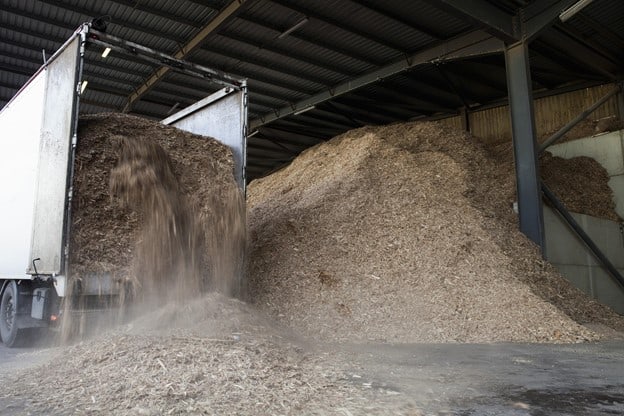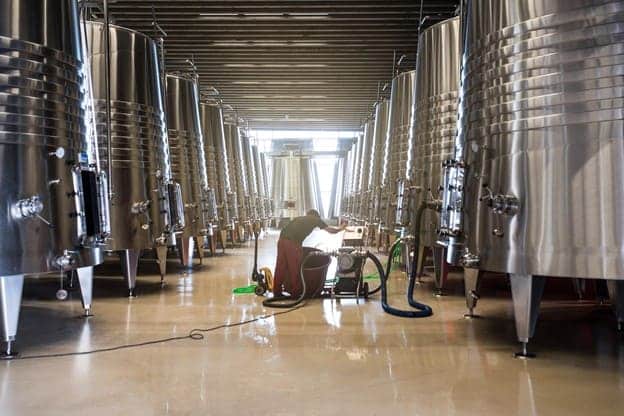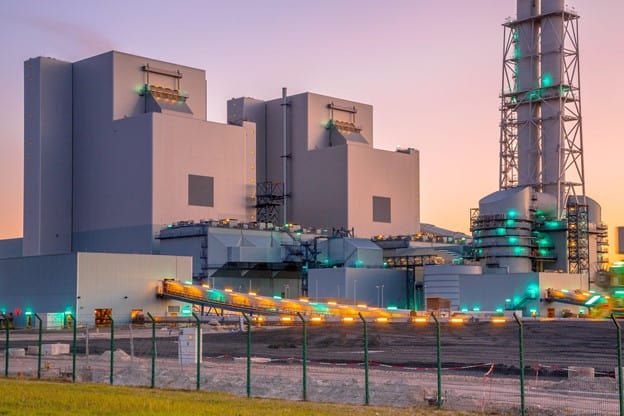The history of biomass traces back to our earliest roots. In the pursuit of clean energy, ‘biomass’ and ‘bioenergy’ stand as cornerstones, constituting 98% of renewable energy. This exploration delves into biomass’s historical journey, from ancient use to modern eco-consciousness, unveiling its roots and evolution. Join us on a journey through millennia, uncovering pivotal moments that have shaped biomass into a force transcending eras, promising a sustainable future with cutting-edge manufacturing conveyor systems.
Likely, most people reading this have probably come across the terms at least once or twice before. Despite the popularity of these terms, there is still a lot of uncertainty and misinformation surrounding them. Many are under the impression that biomass and bioenergy are modern forms of energy and that the biomass energy transition is something new. It could not be further from the truth. That’s why we’ll break down what biomass is and have a short review of its history.
What Is Biomass?
The term biomass refers to living or recently dead organisms and any byproducts of those organisms – plant or animal. In a strict sense, the term encompasses all living things. In the context of biomass energy, it refers to the crops, residues, and other forms of biological materials that can be used to substitute fossil fuels in energy production.
Biomass has gained a lot of traction in recent years due to its capacity for renewable electricity generation, green energy production, biofuels, and thermal energy. Plants, a form of living biomass, are the most common type of biomass that exists. They take in carbon dioxide as they grow and release it when they are used for energy. This carbon cycle is why many consider biomass a carbon-neutral (or close to a carbon-neutral) form of energy. The lower release of greenhouse gas emissions translates to fewer environmental impacts on climate change and global warming.
The historical exploration intertwines seamlessly with the importance of efficient handling, bringing tubular conveyor manufacturing and conveyor solutions into focus.

Looking at the History of Biomass
Biomass predates us. There is a lot of evidence that supports the claims that we utilized biomass as an energy supply between 230,000 and 1.5 million years ago. The 19th-century expansion into modern uses, including ethanol and vegetable oil, integrates the importance of advanced conveyor belt systems and belt conveyor manufacturers in the manufacturing process. We are going to look at some biomass milestones throughout history.
Burning Biomass in Ancient Times – Fire
Biomass is by no means a form of alternative energy that has been discovered in recent years. In fact, biomass was around long before people inhabited Earth. As humans populated the world, they started utilizing biomass for energy. This means that biomass utilization is almost as old as humans themselves. The first form of biomass as an energy source is the use of fire.
Biomass is among the most straightforward renewable energy sources of combustible carbon globally, and we use it to generate heat and cook food. From this point on, we developed a fascination with what has come to be known as bioenergy.
Combustion was and remains the leading form of converting biomass to energy. This is why biomass is still massively used in developing countries that do not have the bioenergy generating systems that more developed countries utilize to create alternate energy.
The History of Biomass Energy Changed in the 1800s
Humanity initially focused on utilizing biomass for cooking and heating. Around the 19th century, we started looking at more modern uses of biomass materials. Here are some of the most common examples of biomass in the 19th century.
Ethanol
Fire, the oldest bioenergy, paved the way for ethanol, a significant leap in utilizing carbon for energy. Despite its ancient roots in fermentation, evidence of alcohol distillation only surfaced in twelfth-century Italy. By the 1100s, ethanol found use in cooking and lighting, quickly evolving into a popular renewable energy source. Derived from abundant grains, ethanol required a simple still for production, becoming a key substance, alongside turpentine, to power the first engine in 1826. Its popularity persisted until the 1890s, marking a crucial era in the utilization of ethanol fuel for power.
Vegetable and Fish Oil
As people started exploring ethanol’s possibilities as an alternative energy source, they also looked into using vegetable and fish oil for heating and lighting. Many civilizations used oils to generate heat and light. Even ancient cultures like Egyptians and Sumerians are believed to have burnt animal and vegetable oils. These oils were utilized later in history as well. As populations grew, a new industry around lighting and heating emerged.
People got more innovative and used the resources around them to produce light and energy. Examples include refined turpentine from pine trees, alcohols (especially wood alcohol – methanol), and a mixture of the two, the primary fuel before petroleum.
Pine Sap (Naval Stores) – Turpentine
Pine sap was a precious renewable resource from the 1700s to the 1960s. Before oil, pine sap was the resource nations competed for. In its raw form, pine sap was used in the ship-making process. When distilled, the sap made several extremely valuable chemicals at the time – the most important of these being turpentine. Turpentine had multiple uses, but its most important use as an alternative energy source was lamp oil.
Petroleum’s Evolution – Unveiling the 150-Year Journey from Discovery to Diesel Innovation
The 150-year evolution of petroleum, similar to ethanol and turpentine, has unfolded with increased energy demands. Rudolf Diesel’s revolutionary diesel engine underscores the importance of an automated conveyor system in the efficient production of refined fuels.
Transportation Brings Biomass Energy Back to Life
In the early 1900s, a notable turning point in the history of bioenergy occurred as biomass fuel regained popularity. The surge in the automotive industry and the impact of wars created a scarcity of resources, prompting car manufacturers to re-embrace bioenergy. A prominent illustration of this shift was seen in Henry Ford’s adoption of liquid biofuel and ethanol to fuel his vehicles.
This trend gained particular prominence during the First World War when fossil fuels became scarce. The adversities of the era rekindled a substantial demand for ethanol. The seamless narrative incorporates the role of conveyor engineering in handling these bioenergy sources.
Crude Oil and Fossil Fuels Eclipsed Bioenergy
The renewable energy projects that were emerging at the time had a lot of potential. However, commercialization and large-scale mining brought coal and crude oil to the forefront of the energy scene. They saturated the market and got prices down.
In addition to that, these nonrenewable fuels proved to be very efficient and practical for everyday use. This brought about the reduction of bioenergy use and the rise of fossil fuels. Fossil fuels became the fuel of choice in most countries and held the top position in energy consumption until the 1970s. The narrative weaves in the importance of automated conveyor systems in handling the increasing demand for these fuels.

Biomass Energy in the Late 20th Century
The geopolitical tensions of the 1970s triggered a fuel crisis, leading the Organization of Petroleum Exporting Countries (OPEC) to decrease oil exports. This crisis garnered the interest of governments and academia, prompting a widespread exploration of renewable energy alternatives. This initiative fueled advancements in green energy, including solar panel technology, geothermal power plants, offshore wind farms, and hydroelectric power. Throughout this era, scientists adopted a systematic approach to energy issues and introduced the term “biomass” to the lexicon.
As time went on, the importance of bioenergy got linked to issues like fossil fuel pollution. Some growing environmental concerns mark this period of biomass history. Scientists turned their attention to researching climate change and fossil fuel reduction. The era witnessed advancements in green energy technologies, emphasizing the importance of conveyor systems manufacturers and their role in the efficient handling of resources.
Biomass in the Modern World
As things currently stand, modern biomass energy production is a vital source of renewable energy. In fact, it has gone far beyond wind energy and solar energy in the search for renewables. It is the leading source of alternative energy. Biomass feedstock is processed and converted to energy in a number of different ways.
While burning woody biomass (forest biomass materials and wood pellets) remains the most popular way we use this renewable energy resource, there have been massive strides in the field of biomass energy. Innovation has brought us energy crops that are mass-produced and converted into biofuel and biogas and landfills that use anaerobic digestion to convert biomass into biogas for everyday use.
Global Initiatives and the Promising Role of Biomass in Tomorrow’s Energy Landscape
Governments worldwide have embraced the green movement and are putting measures and protocols in place to raise awareness and ensure there is a lot more green energy generated. Don’t forget the role of a conveyor belt system and automatic conveyor system, since these will efficiently process the biomass. As we move forward, it is expected that the field of biomass renewable energy technology will grow.
Biomass is predicted to play a vital role in future energy-efficient power generation. Whether it produces electricity, heat, or fuel for transport, its carbon-neutrality carries many potentials. Renewable energy, be it in the form of solar power, geothermal energy, hydroelectric power, wind turbine energy, or biomass, is here to stay.

Explore Top-Notch Conveyor Technologies With Cablevey Conveyors
Biomass is an important renewable energy source in the modern world. As it becomes a more viable and popular energy solution, biorefineries, processing plants, and businesses need to have systems that ensure proper handling and production.
Cablevey Conveyors offers its expertise in handling solid biomass through an advanced tubular conveying system and a more traditional belt conveyor system, as well as flake, powder, and wet forms. Our range of tubular conveyor systems provides reliable, cost-effective, low wastage, and safe biomass material conveying that can help you keep processes clean, safe, and quiet.Our solutions, backed by conveyor installation supervision and cleaning conveyor belts, ensure processes are efficient, high-speed, and high-volume production. Contact us today and check out our industrial conveyor systems for the best biomass conveying experience.






